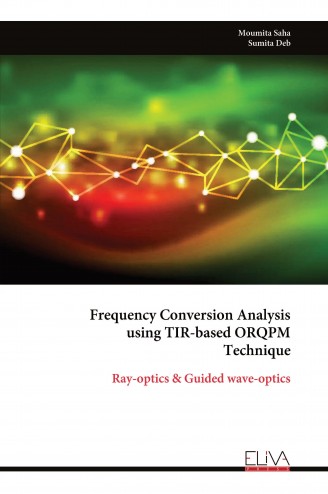Descripción
Frequency conversion had grabbed the interest of researchers since 1961, with the development of the laser yielding the needed high intensity monochromatic light. This frequency conversion processes demand phase-match in order to avoid phase error between the interacting waves of three-wave mixing. As a way out of this phase error problem, the total-internal-reflection (TIR) based quasi-phase-matching (QPM) technique had acquired popularity among the researchers of the 1960s’ and till now plays a vital role in the field of frequency conversion along with modifications. This TIR-QPM technique was conceptualized by Armstrong et al. in 1962. However, the outcomes of this TIR-QPM technique show discrimination among the theoretical and the experimental evaluation. Raybaut et al. identified the cause of this disparity as destructive interference of the emitted radiation during reflection, which was described by Bloembergen and Pershan’s nonlinear law of reflection. Thereupon, the concept of optical rotation quasi-phase-matching (ORQPM) technique was introduced by Lewis Z. Liu et al. in 2012, to avoid the destructive interference of the generated radiation by rotating the plane of polarization. This was the first concept of generating circularly polarized radiation by the family of QPM technique. Therefore, our peer team has combined this ORQPM technique with the TIR phenomenon to successfully alleviate the problem of destructive interference impact of the emitted parametric waves and increase peak conversion efficiency. The polarization rotation of this TIR-ORQPM technique has been exhibited in the presence of a strong external electric field and the generated harmonic radiation is linearly polarized.

